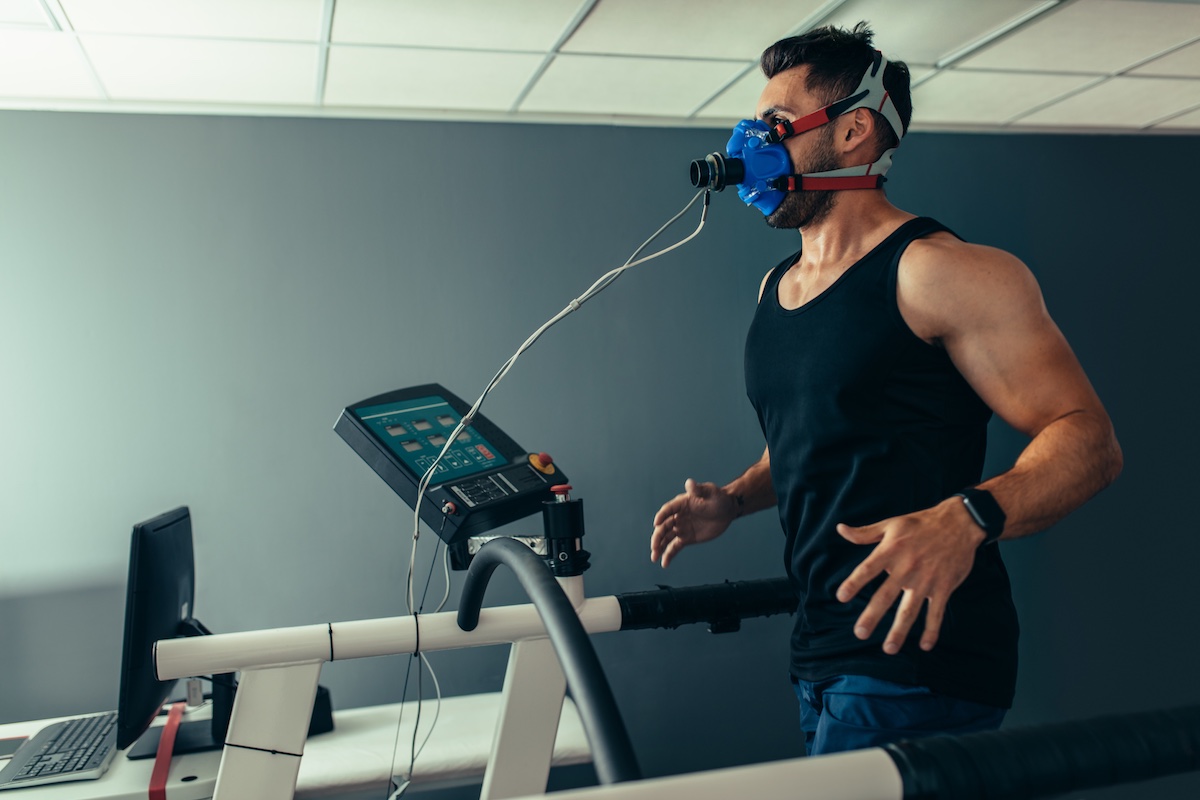You can now have personal trainers in your headphones, or set up a mirror that beams classes into your home. The options are limitless. But can they ever beat the camaraderie of working out with other people?
Chessie King whoops, flipping her ponytail out of her face. Her partner, Mathew Lewis-Carter, grunts with the exertion, sweat pouring from his brow. Five cameras pick up every move, as they lunge and thrust in front of a pulsating LED screen at the east London studio where they are filming a high-intensity workout class for at-home fitness pioneers FIIT.
The footage will be broadcast via the FIIT app as a live class. Users will be able to join from the comfort of their own homes. If they choose to wear the heart-rate monitor provided, they can compete with other users on a live leaderboard. There are also classes available on demand, for the less competitive.
FIIT and the other players in the burgeoning ‘digital fitness’ industry are all out for a piece of the UK’s £4.9bn fitness industry, which the market-research group Mintel predicts will grow to £5.3bn by 2023. Their aim? To bring the gym to you, in some cases with hi-tech wearables or equipment, or through guided workouts on your phone.
Since FIIT launched in April 2018, the app has been downloaded by 150,000 users, who have taken a combined 500,000 classes like this one. “Let’s keep the sweat on the floor,” says the production head Mitra Memarzia from the darkened control room, as Lewis-Carter rocks back on his heels, exhaling deeply.
Although the class is only half an hour long, it takes twice as long to record, meaning King and Lewis-Carter – fitness influencers and personal trainers with 633,000 Instagram followers between them – look knackered. But in order to get at-home users through the gruelling routine, the trainers have to project the positivity typically associated with children’s-TV presenters. “Maintain that energy even though you’re tired,” cheers King, legs pumping furiously. “We’re with you!”
Later, at home, I try FIIT for myself. I log in via the app, put on the heart-rate monitor, connect the device to my TV, and move the coffee table into my kitchen – as in many urban homes, space is tight. On the screen, a timer counts down to the 8pm class, led by personal trainers Adrienne Herbert and Alex Crockford. It shows there are 14 other members online. Seeing them congregating in the “digital lobby”, I feel unaccountably nervous. But there’s no time for that: after a warm-up, we launch straight into a high-intensity class.
It wasn’t so long ago that exercising at home was the norm. Jane Fonda defined the genre in the 80s, her tapes introducing women to the joys of aerobic fitness in footless tights. Cindy Crawford followed suit in the 90s, while Davina McCall entered the market more recently. But today’s hi-tech, interactive, at-home workouts are unrecognisable compared with those of the past.
Beyond FIIT, the virtual cycling experts Peloton and Zwift lead users through classes on connected stationary bikes at home. Hydrow does the same with rowing machines. A US startup, Mirror, beams classes into your home on to a LCD mirror. In the audio space, Aaptiv puts personal trainers in your headphones, while the popular smartphone app SWEAT: Kayla Itsines Fitness bills itself as “the world’s largest digital gym”, with 35min workouts completed since 2015.
One SWEAT fan is Warwick-based Rebecca Allen, a 21-year-old professional dog-sitter. On the morning we speak, Allen has completed a half-hour workout dressed only in sports kit she would never have felt comfortable wearing at her former gym, where she witnessed men taking photos of women squatting without their knowledge. (Allen says she complained to the management, who did nothing.)
“I feel a lot better for using this app than using the gym,” says Allen. “When I went to the gym, I didn’t have a routine, so I wasn’t sure what I was doing. But, with the app, you go up in stages, so you can feel a difference.” The app’s structured, goal-focused workouts help her stick with it; when you complete a goal, confetti cascades down the screen. “Having goals and targets, and being rewarded for successfully achieving them, is a key component of building habits,” says SWEAT’s chief executive, Tobi Pearce.
“What would it take to get me back into the gym?” asks Romer Attenborough, a 28-year-old teacher from Kingston upon Thames. “For it to be a lot cheaper.” Attenborough used to frequent Virgin Active, but felt that the membership at the time, £110 a month was too expensive. In 2017, she discovered FitnessBlender, a no-frills YouTube workout channel, and never looked back. “It’s so effective,” she says. “After a workout, I’m literally dripping.”
It is possible to exercise as effectively on your own at home as you would in a gym under supervision, depending on your own motivation – but there are risks. Most digital fitness programmes include warm-ups and cool-downs, but it’s possible to overdo it – and SWEAT’s focus on fat loss (users are encouraged to post photos documenting their progress towards “bikini body confidence”) may be triggering for people with eating disorders or obsessive exercise habits.
“Of course, gyms are more than just places we work out in – they are also important social hubs, particularly for self-employed people. I know this first-hand: as a freelance journalist, the only reliable interaction I have is with the trainers in my local gym, which I attend daily. Stripping that human contact out of my life would be alienating.
Source: https://www.gulf-times.com/story/639625/Can-high-intensity-home-workouts-replace-the-gym
More on Nutrition & Weight Loss






Leave A Comment
You must be logged in to post a comment.